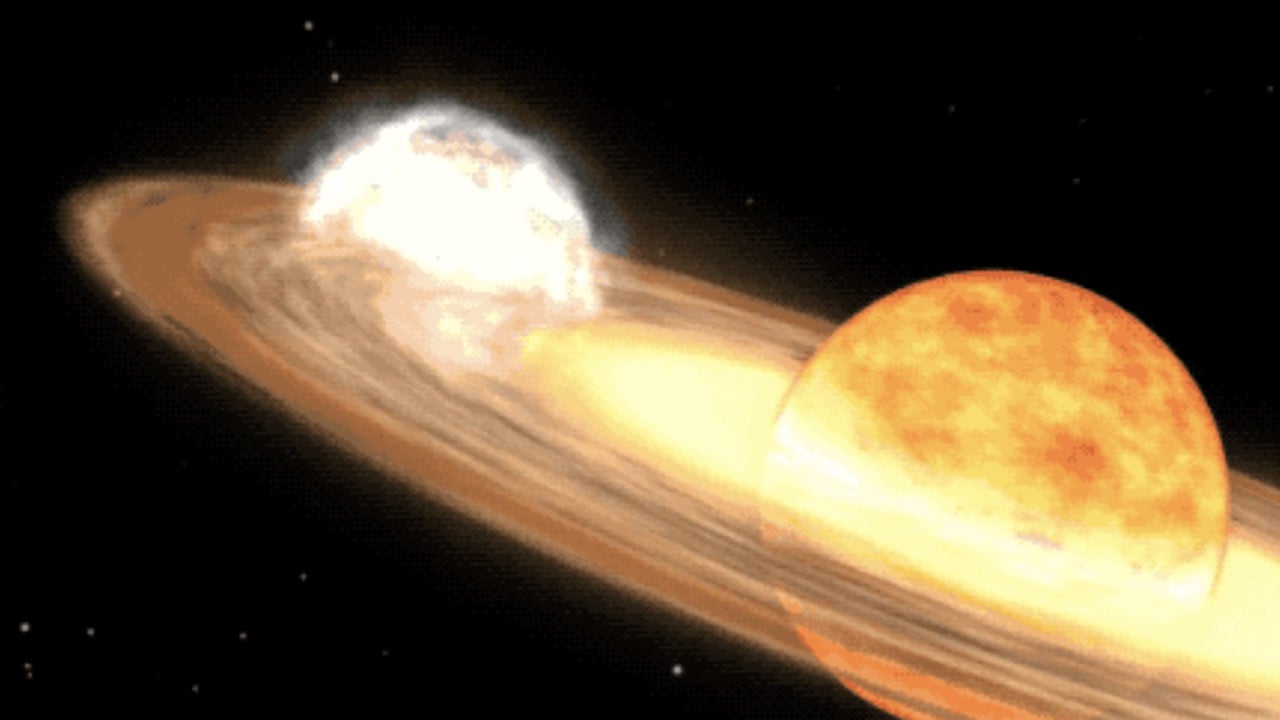Astronomers have predicted that a nearby white dwarf star orbiting in the T Coronae Borealis system some 3,000 light years from Earth will erupt in a dramatic nova explosion later this year, which will be visible to the naked eye (via SETI Institute).
For hundreds of years, generations of astronomers have observed the violent behavior of a binary star system made up of a red giant, which is gravitationally bound to a super dense, Earth-sized star with a mass comparable to that of the Sun, known as a white dwarf.
This particular mix of stellar bodies is known amongst astronomers as a "cataclysmic variable," and it's not hard to see why. T Coronae Borealis (T CrB) is ordinarily too dim to be seen without the aid of a telescope. However, once every 80 years, the star system gives rise to a dramatic explosion that renders it bright enough to be seen by the naked eye as a point of light that rivals the intensity of the North Star, Polaris, in its luminosity.
Astronomers believe that the explosion occurs thanks to a grand act of stellar cannibalism, in which the intense gravitational influence of the white dwarf captures immense quantities of material that has been cast off by the nearby red giant. This process continues for decades until the white dwarf’s mass hits a critical point. After that, a bright, thermonuclear nova explosion is triggered, releasing a torrent of radiation that is visible from Earth.
T CrB's explosive cycle has been observed to come full circle roughly once every 80 years, with the last event taking place in 1946. This timing, paired with a recently detected dimming in the light of the cataclysmic variable system, has led astronomers to predict that the next nova explosion will occur any time from now, to September 2024.
The explosion will be located in the constellation Corona Borealis (AKA the Northern Crown) in the northern hemisphere as seen above. It will likely be visible to the naked eye for several days after the event, and for even longer for those viewing with the aid of binoculars or a telescope. Since the explosion is a nova, rather than a supernova, its appearance will not herald the death of the white dwarf star that birthed it. Instead, the dense star will likely weather the explosion, and go on to collect more material from the red giant in preparation for another show of cosmic fireworks some 80 years hence.
Regardless, T CrB is one of only five star systems that are known to regularly give rise to a bright nova explosion. As such, it will provide an invaluable opportunity for astronomers hoping to better understand how these dramatic outbursts affect the evolution of the star system in which they take place.
Thumbnail credit: NASA/Conceptual Image Lab/Goddard Space Flight Center.
Anthony is a freelance contributor covering science and video gaming news for IGN. He has over eight years experience of covering breaking developments in multiple scientific fields and absolutely no time for your shenanigans. Follow him on Twitter @BeardConGamer





